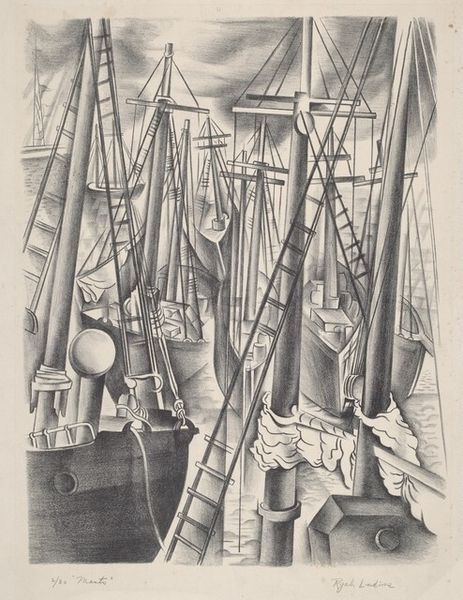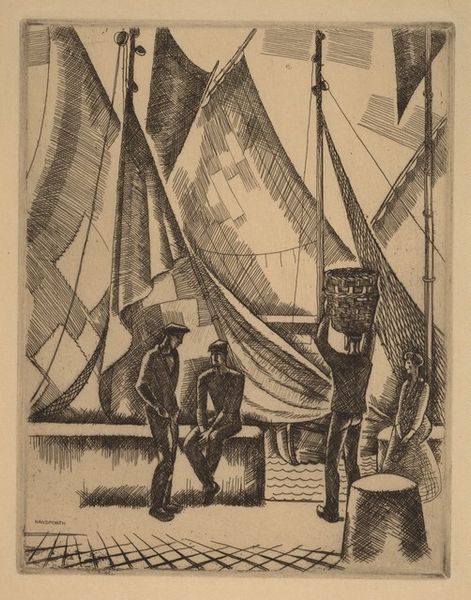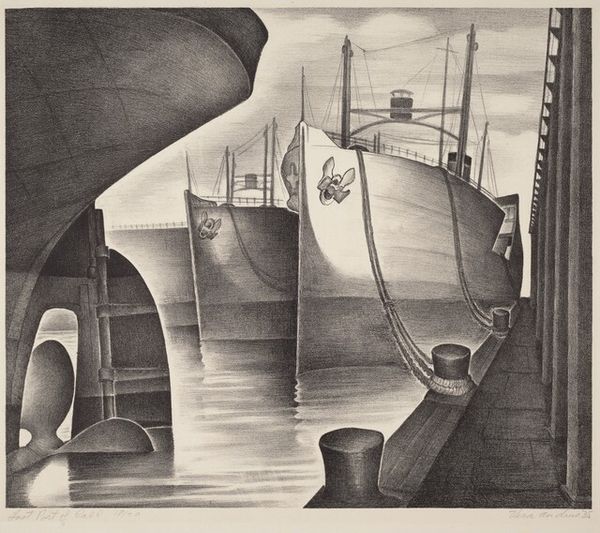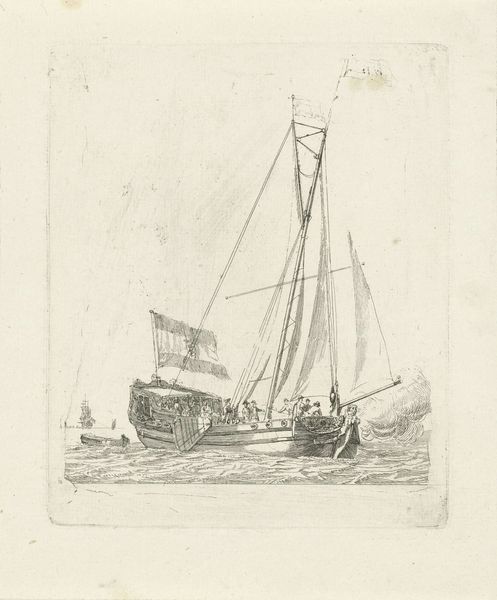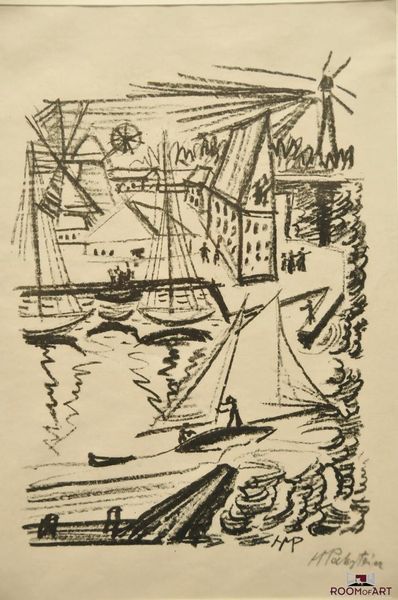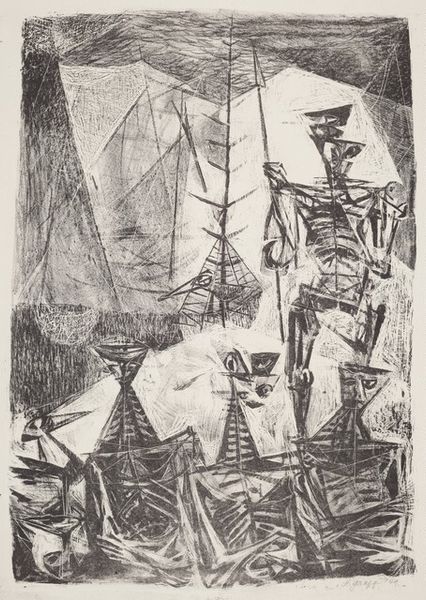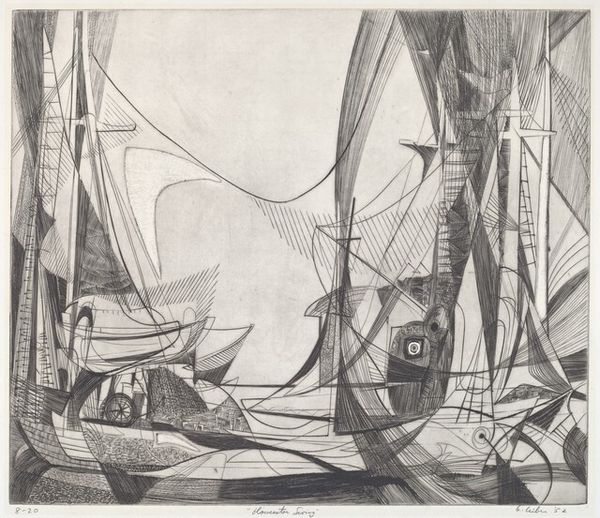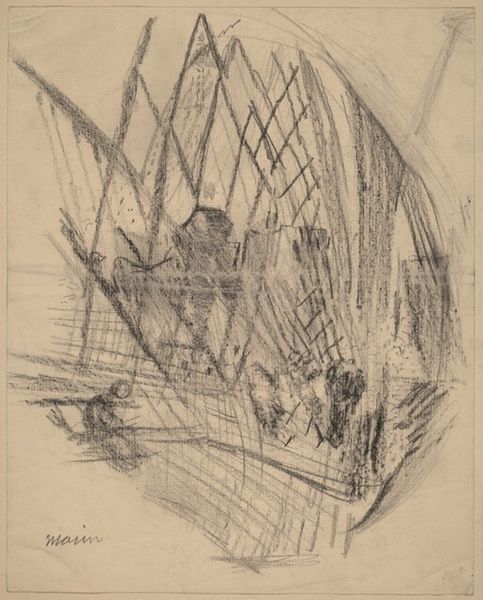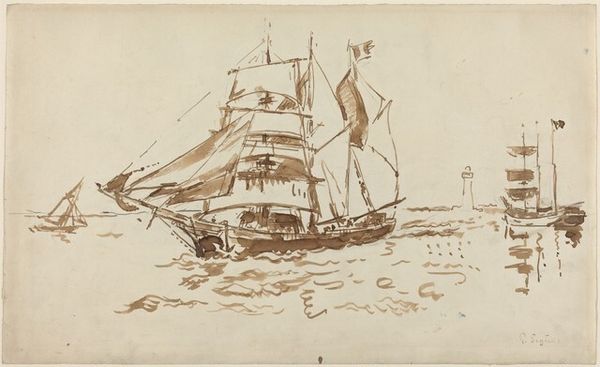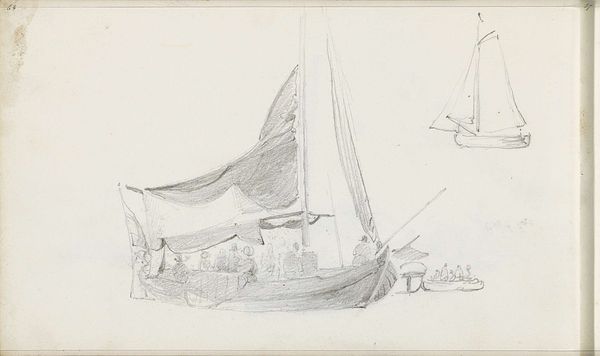
drawing, print, paper, pencil
#
portrait
#
drawing
# print
#
landscape
#
paper
#
geometric
#
pencil
Dimensions: Image: 356 x 305 mm Sheet: 473 x 358 mm
Copyright: National Gallery of Art: CC0 1.0
Editor: So here we have "Three Men on a Beach," a 1927 pencil drawing on paper by Marguerite Zorach. The geometric forms make it feel almost dreamlike, or like peering into the past through a cubist lens. How do you interpret the kind of simplified figures and shapes in this work? Curator: It’s interesting you pick up on that dreamlike quality. I find it too! To me, the almost blocky figures, juxtaposed with the complex geometry of the boat and buildings, create a sense of… longing, maybe? Like capturing a memory that's starting to fade around the edges. The pencil lines, so delicate and precise, feel almost at odds with the solidity of the forms. Does that contrast strike you as well? Editor: I see what you mean. There’s a real tension between the detail and the simplification. But what about the setting itself? The beach feels almost like a stage. Curator: Absolutely! It's like the whole scene is a set design. Zorach often played with spatial ambiguity, layering planes and perspectives. Are the men part of the landscape, or are they separate from it, observing or reflecting upon it? Are *we* looking at them, or experiencing the setting *with* them? And look, those geometric shapes remind me of cubism -- a bit flattened, like looking at something from multiple angles. Maybe she wants us to question the very notion of a singular viewpoint. Editor: That makes me think about how even "reality" is just a collection of angles and perspectives. Thanks – I am definitely seeing more than I did when we started! Curator: Exactly! It’s all about feeling our way through the image, isn't it? These glimpses into someone else's subjective visual world. It truly makes you consider your own angles!
Comments
No comments
Be the first to comment and join the conversation on the ultimate creative platform.
